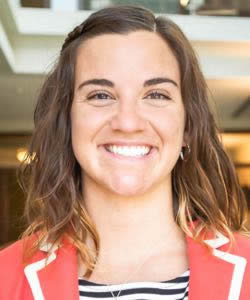Archeological evidence indicates that humans inhabited Ireland as early as 8000 BCE. Polytheism dominated the land, which was defined by a series of disconnected small kingdoms, until St. Patrick landed in Ireland in 432 CE, bringing Christianity along with him. As papal influence spread, the nation took on a Catholic identity. The Normans arrived in 1168 CE, beginning a period of British control that would continue for nearly 800 years. Much resentment surrounded the British rule, and consequently, the Irish majority came to condemn Protestantism, viewing it as synonymous with their oppressors; thus, a majority of the lower class maintained their Catholic identity, while some members of the upper class converted to Anglicanism to avoid taxation and persecution by the British. Tension existed between the Protestants and Catholics, and acts of aggression were not uncommon.
In 1916, the Easter Uprising occurred, leading to the War of Independence that gained independence for 26 of the 32 Irish counties in 1922. (The other counties remained British and now make up Northern Ireland). The counties of Ireland were predominantly Catholic and those of Northern Ireland were predominantly Protestant. Not all were satisfied with the treaty, however, and a civil war ensued. Though politically motivated, religion was also a factor. Catholics and Protestants, who are both Christians with their faiths rooted in the Bible, seemingly put aside the Golden Rule of "treat others as you want to be treated" and took up arms. Later came “The Troubles,” beginning in the late 1960s, which challenged whether Northern Ireland should remain part of the United Kingdom and caused a resurgence of religiously motivated persecution. Though conflict was occurring, the 1979 visit of Pope John Paul II to Dublin marked the height of modern day Irish Catholicism, with one-third of the country’s population assembling at Phoenix Park for the celebration of the Eucharist. At this Mass, Pope John Paul II made a call for peace, stating, “There must always be consistency between what we believe and what we do.”
With such a robust history, it can be easy to get lost in the facts and not delve in and experience the reality. Prior to coming to Ireland, I was warned, “Don’t tell people you’re Catholic, and don’t wear anything that will identify your faith.” This didn’t sit well with me; we are living in the twenty-first century, and Ireland is a developed country. I have pride in my faith, and nothing can take this away. Yes, religion is sometimes a sensitive topic here in Ireland, causing emotions to flare; however, others welcome the conversation. One such person was my Dublin tour guide. Amidst our conversation, his words resonated with me: “We remember the past, but we do not allow it to shape the future.” He did not try to hide the violent religious differences that have pervaded Irish history. That being said, though, they did not define the conversation. He offered me great words of wisdom: people can say what they want, but the best way to learn is to explore, experience, and formulate one’s own opinions. That is exactly what I have done.
Catholicism is nowhere near as prevalent in Dublin as it was when Pope John Paul II visited. I was shocked to learn that St. Patrick’s Cathedral is Protestant rather than Catholic, as is Christ Church Cathedral, another architecturally dominant church in the city center. When wandering through Trinity College, I learned that Catholics were forbidden to attend until 1970. (University College Dublin [UCD], a historically Catholic school, educated the Catholic population.) Today, both schools are religiously tolerant, welcoming students of all faith traditions. This illustrates the change that is occurring. Student-led faith organizations do not see divisions. I am a member of the Christian Union at UCD, and next week, we will be hosting a Christmas Caroling Service with the Newman Society (a Catholic organization) and Livingstones (a Christian organization).
Despite the cessation of religious war that has come over Ireland, parts of the world continue to be plagued by religiously motivated acts of aggression. At our Christian Union meeting this week, the speaker reminded us that “even in the midst of all the turmoil occurring in the world, it is still a wonderful day to be alive.” Christians are called to forgive and pursue. Regardless of another’s faith background, we must see the humanity in others and afford them respect for this very reason. Hopefully, the realization that we are human beings with spirituality can one day bring peace to our world.

